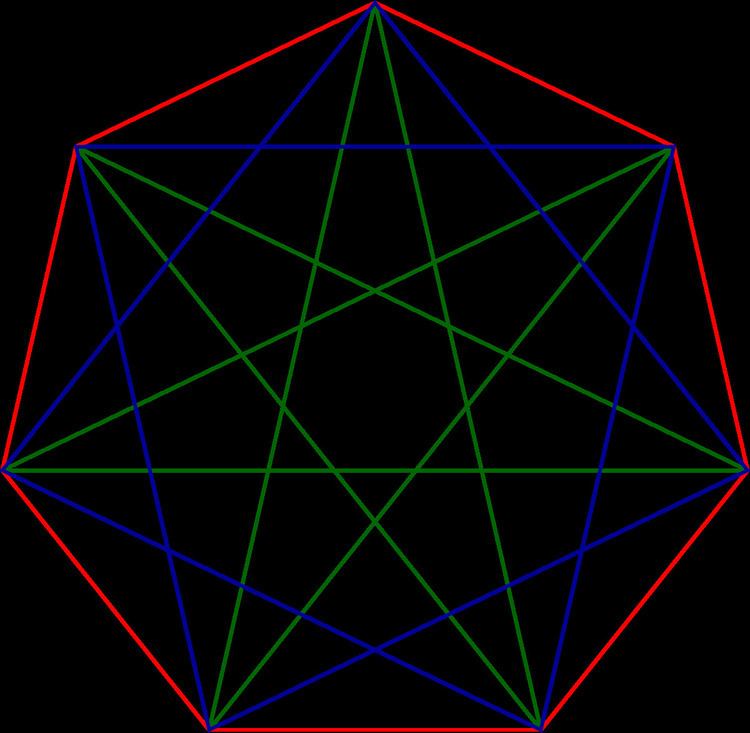 | ||
A heptagonal triangle is an obtuse scalene triangle whose vertices coincide with the first, second, and fourth vertices of a regular heptagon (from an arbtrary starting vertex). Thus its sides coincide with one side and the adjacent shorter and longer diagonals of the regular heptagon. All heptagonal triangles are similar (have the same shape), and so they are collectively known as the heptagonal triangle. Its angles have measures
Contents
Key points
The heptagonal triangle's nine-point center is also its first Brocard point.
The second Brocard point lies on the nine-point circle.
The circumcenter and the Fermat points of a heptagonal triangle form an equilateral triangle.
The distance between the circumcenter O and the orthocenter H is given by
where R is the circumradius. The squared distance from the incenter I to the orthocenter is
where r is the inradius.
The two tangents from the orthocenter to the circumcircle are mutually perpendicular.
Sides
The heptagonal triangle's sides a < b < c coincide respectively with the regular heptagon's side, shorter diagonal, and longer diagonal. They satisfy
(the latter being the optic equation) and hence
and
Thus –b/c, c/a, and a/b all satisfy the cubic equation
However, no algebraic expressions with purely real terms exist for the solutions of this equation, because it is an example of casus irreducibilis.
We also have
and
Altitudes
The altitudes ha, hb, and hc satisfy
and
The altitude from side b (opposite angle B) is half the internal angle bisector
Here angle A is the smallest angle, and B is the second smallest.
Internal angle bisectors
We have these properties of the internal angle bisectors
Circumradius, inradius, and exradius
The triangle's area is
where R is the triangle's circumradius.
We have
The ratio r /R of the inradius to the circumradius is the positive solution of the cubic equation
In addition,
The exradius ra corresponding to side a equals the radius of the nine-point circle of the heptagonal triangle.
Orthic triangle
The heptagonal triangle's orthic triangle, with vertices at the feet of the altitudes, is similar to the heptagonal triangle, with similarity ratio 1:2. The heptagonal triangle is the only obtuse triangle that is similar to its orthic triangle (the equilateral triangle being the only acute one).
Trigonometric properties
The various trigonometric identities associated with the heptagonal triangle include these:
The cubic equation
has solutions
The positive solution of the cubic equation
equals
